Across the Sakonnet River from Newport — a ten minute boat ride but an hour drive — is Little Compton, Rhode Island, the quiet countryside contrast to the “bustling seaport” of Newport.
On its one main road is an unpretetentious setting with a New England shingle cottage, (which has grown since my last visit) and a new stone and shingle barn for the two mini-ponies, Happy and Higgy. As I’m welcomed and introduced to all these new additions…always a given here…it’s clear once again that there are sensibilities afoot of a singular vision (to wit, the Arts and Crafts-style fence and gate looking out upon the meadow).
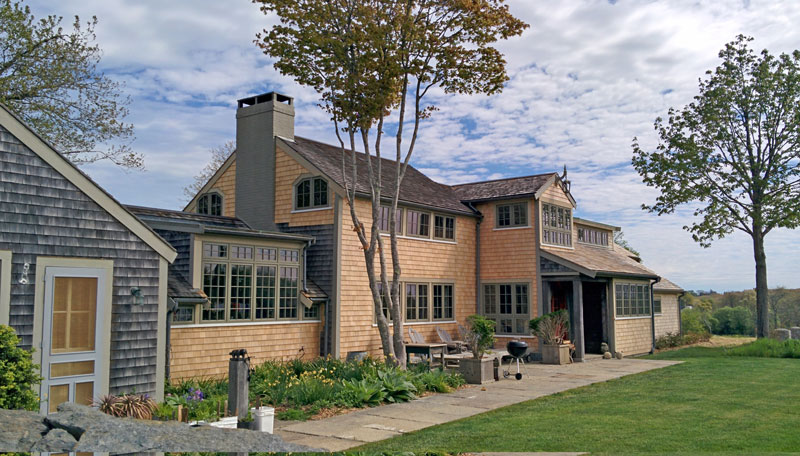
And then you follow the path that leads you into the storied Sakonnet Garden…

…an Alice-in-Wonderland-down-the-rabbit-hole experience where a series of high-walled rooms create micro climates for growing marginally hardy species in the coastal Rhode Island climate (Zone 7). But that brief descriptive doesn’t come close to capturing what awaits a visitor.

A carpet of moss under limbed-up rhododendrons (the initial plant collection that was the genesis of the garden) border a narrow path that intentionally implies a bit of mystery and raises one’s curiosity for what is to come.

On a mere one acre, John Gwynne and Mikel Folcarelli have provided all gardeners an empowering lesson in being fearless…thinking outside the box…taking a chance. I always leave this garden re-charged, full of promises to myself, notes in hand, thoughts buzzing through my head.
It’s an experience I want to bring to each of you…every gardener deserves this!
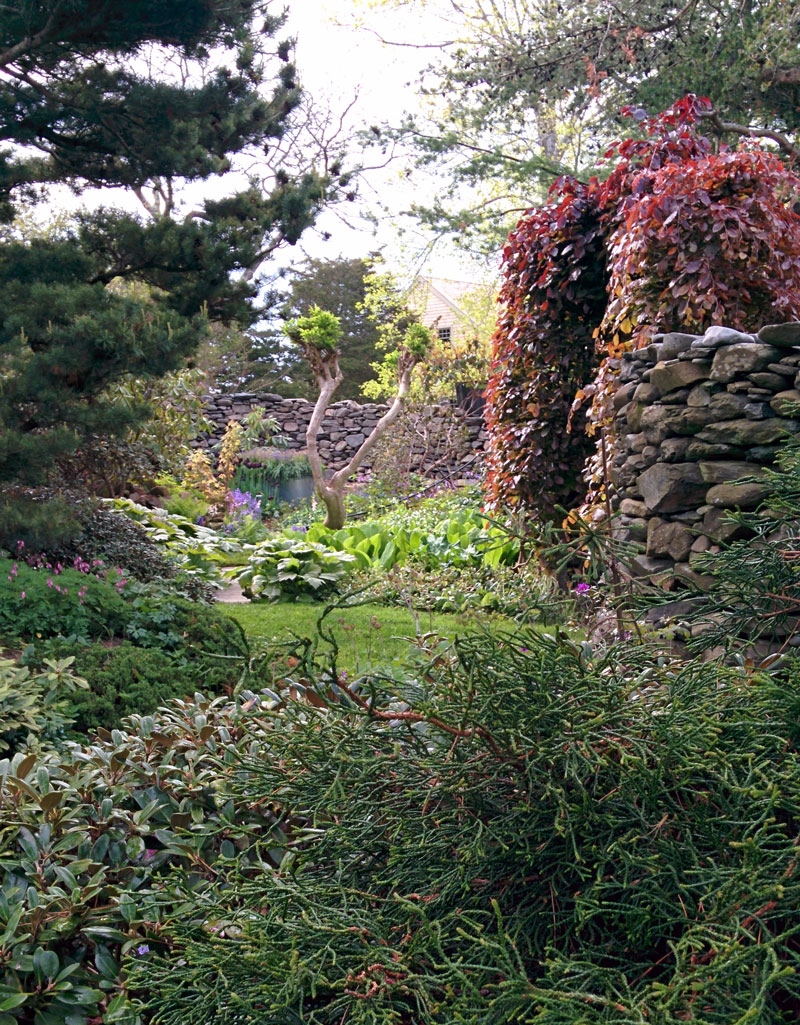
Their email announcement for the Garden Conservancy Open Days captured their personalities so well –“the joint is jumpin’. ” These are two who do not take themselves too seriously, having no compunction about admitting that they once were neophytes whose inquisitiveness and eagerness to learn started them down this garden path over thirty years ago.
John, who is all about plant collecting and connoisseur-ship, and Mikel, who designs with a particular focus on vistas, are a great compliment to each other. Their small, single acre plays large because of these two specialties. As shown above, tight, meandering paths are a favorite and very successful ploy…

…each drawing you on to a specific spot of plant juxtapositions that in their genius cause you to stop and study.

And alongside these paths are instances of the wit and whimsy that so characterize Sakonnet Garden (colorful garden hoses posing as wattling).

Aluminum three-legged chairs sporting a skeletal motif are accents in the Silver Garden, where bluebells and white tulips reign in the late spring.
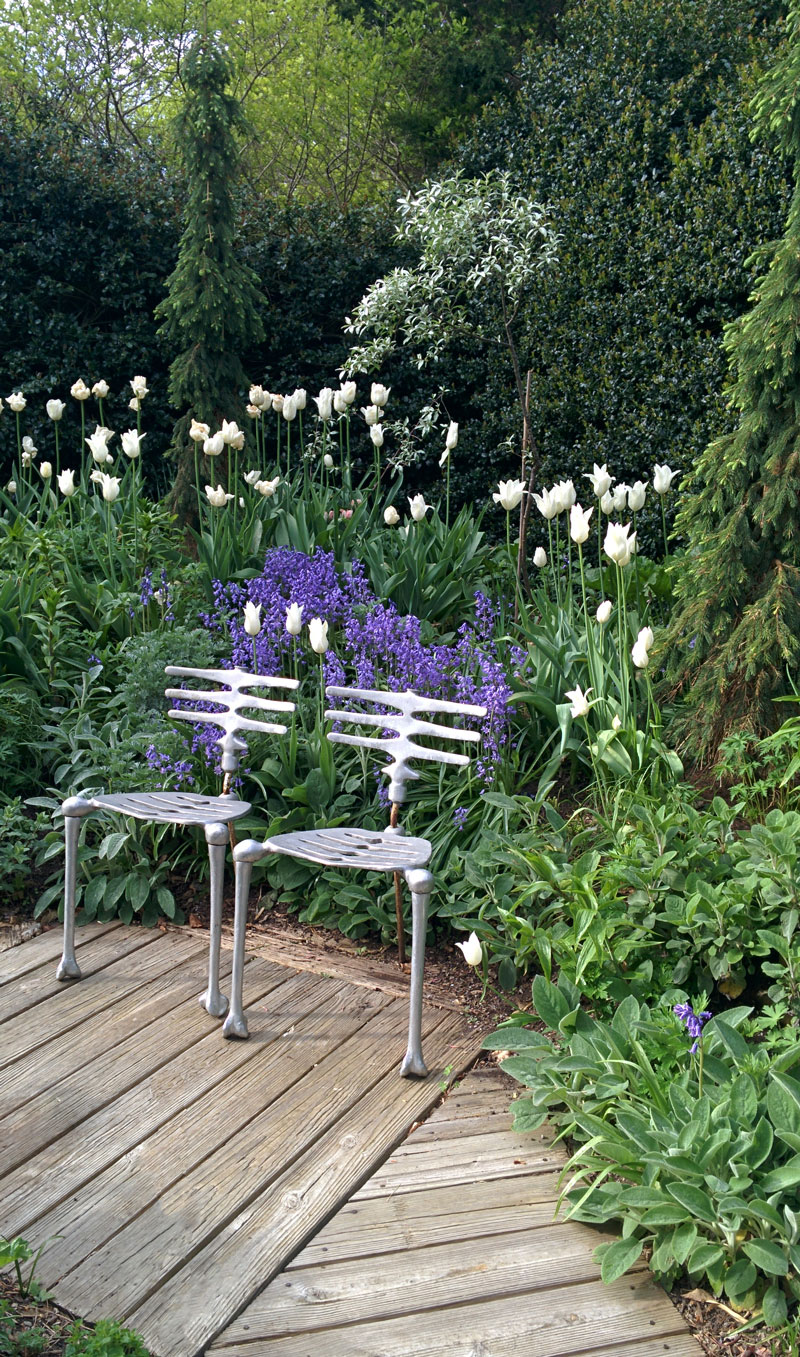
Their beloved rhododendron paired with trillium.
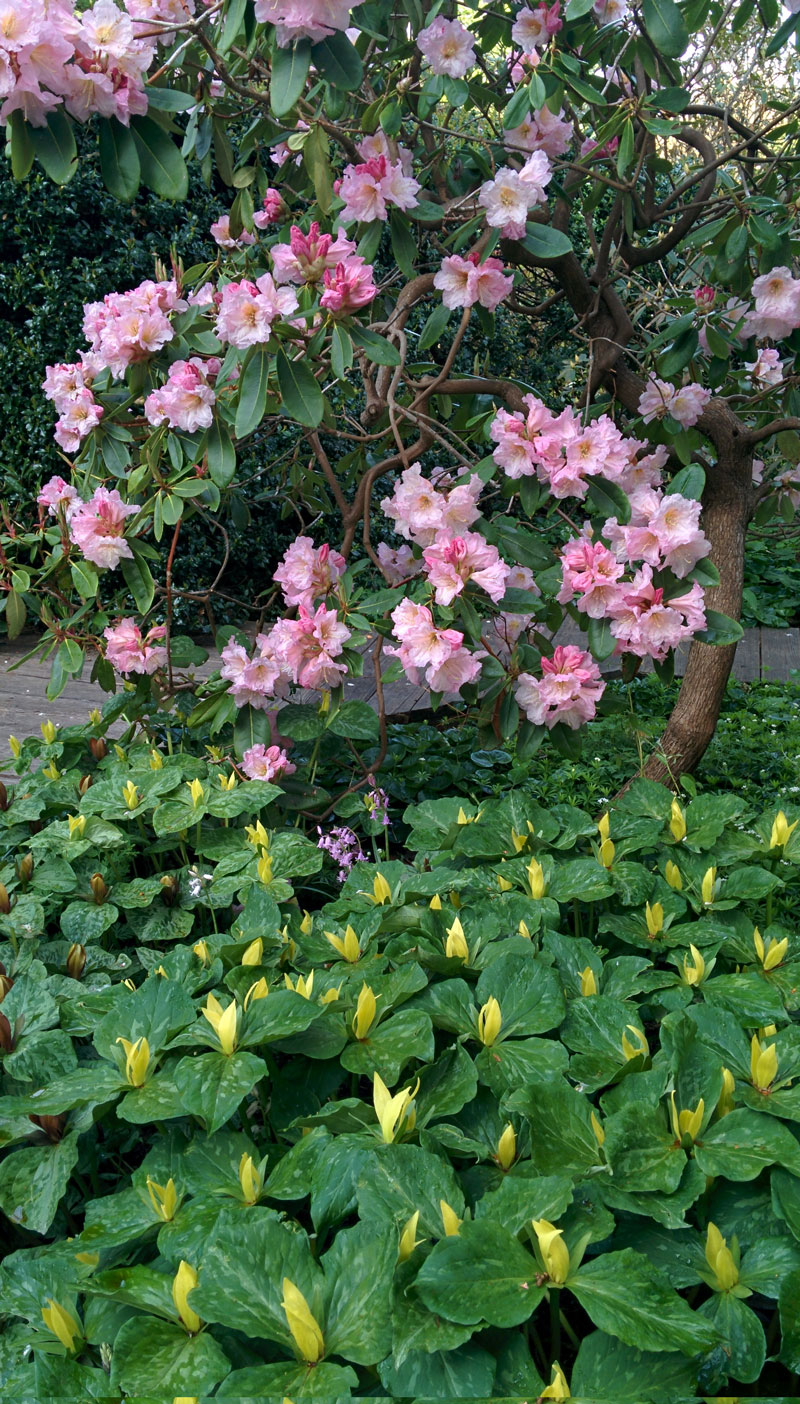
The garden rooms, so integral to good garden design, are another opportunity to push the envelope on creativity with tall and varied choices of material. Along with the box, yew and holly, stones and rocks are used for curvaceous walls and — lo and behold– log rings (complete with a Gothic-style metal gate). Who would have imagined, but consider the contribution they make!
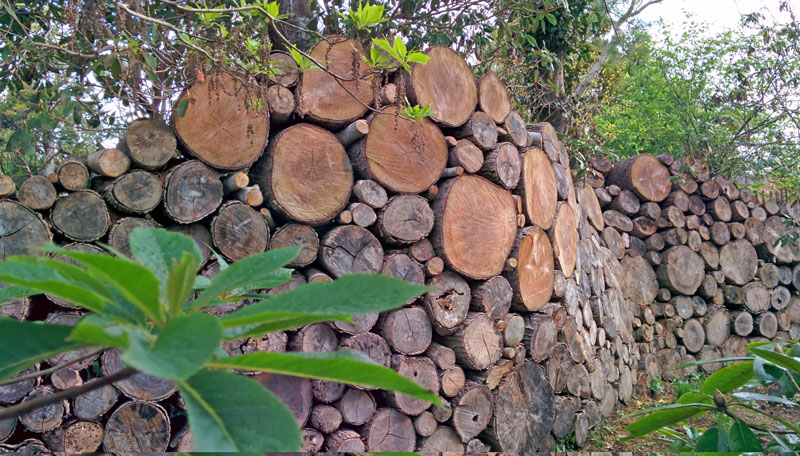
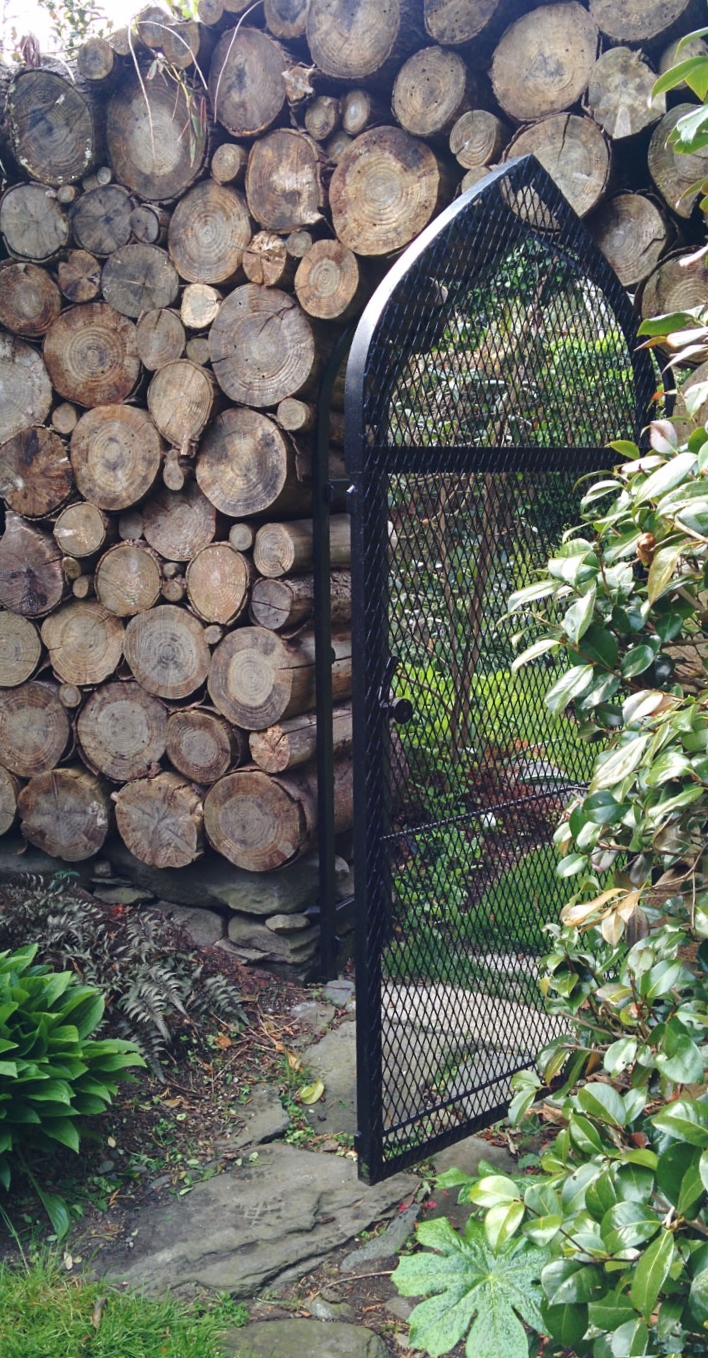
And within these rooms…with names like the Rhododendron Punch Bowl…a plantsman’s agenda is played out; in their gray, foggy climate, for instance, the Yellow Garden allows John and Mikel “to pretend the sun is always shining.”

Dicentra spectabilis ‘goldheart’ and golden berberis.
Creating vistas is a key garden design ploy that depends mightily on the play of spatial relationships, another word for trompe l’oeil (“fool the eye”). In Mikel’s talented hands, they give the visitor the sense of great distances, drawing you on to another turn or corner or vignette…all the while disguising the fact that this is a small garden.
Case in point…the drama of the “Black Border” is achieved by training ‘Black Swan’ (a dark clone of weeping beech) over a series of 9 foot metal hoops that create an exaggerated vanishing point, seemingly miles away…which then continues through the Yellow Garden.
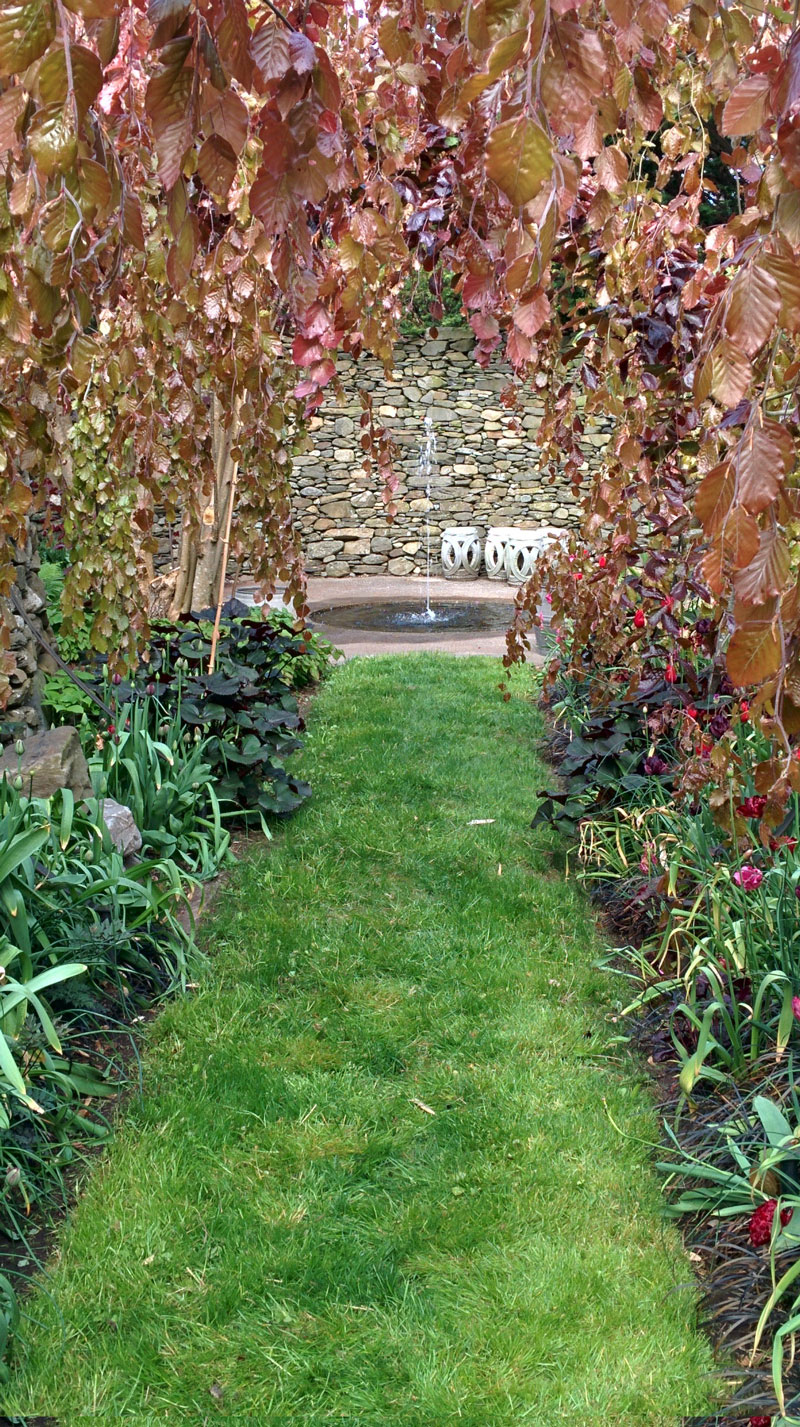

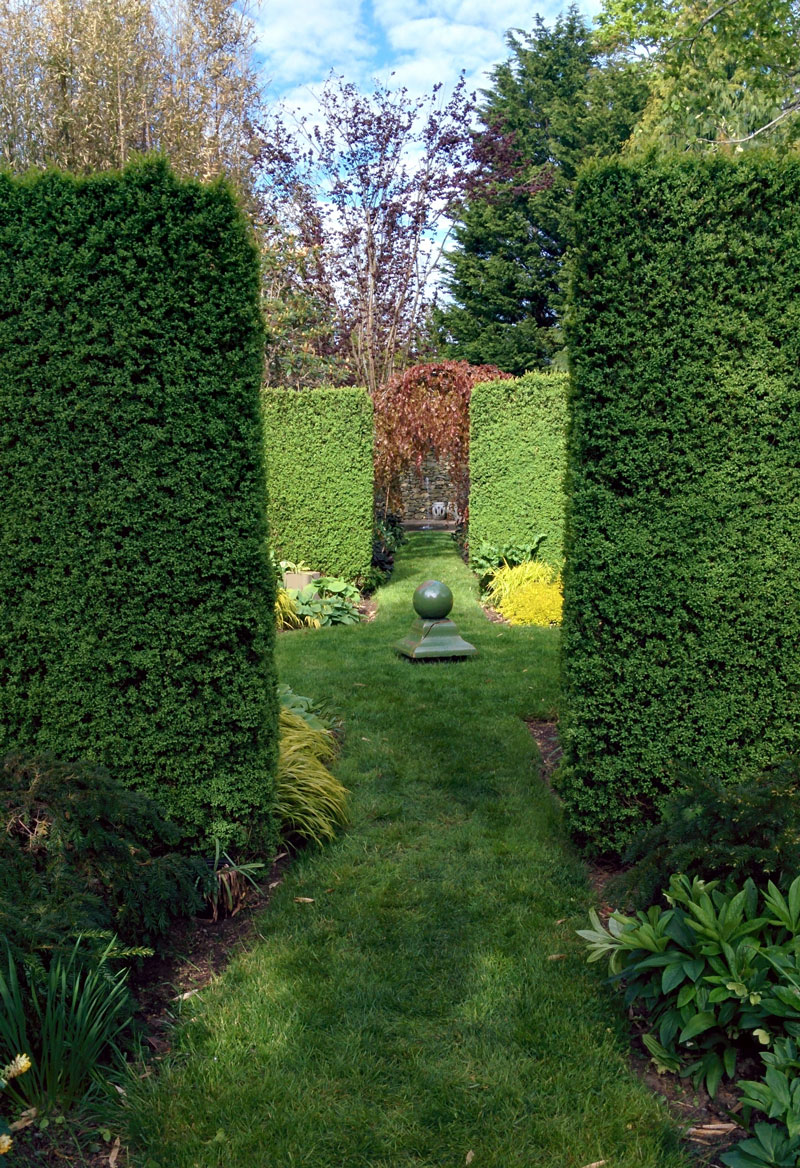
A passion for vistas is beautifully illustrated in the long view which starts in the apricot garden and ends at the curved stone wall of the “Black Border.”

The Cryptomeria Allee is entered through a keyhole in a high hedge of Ilex crenata.
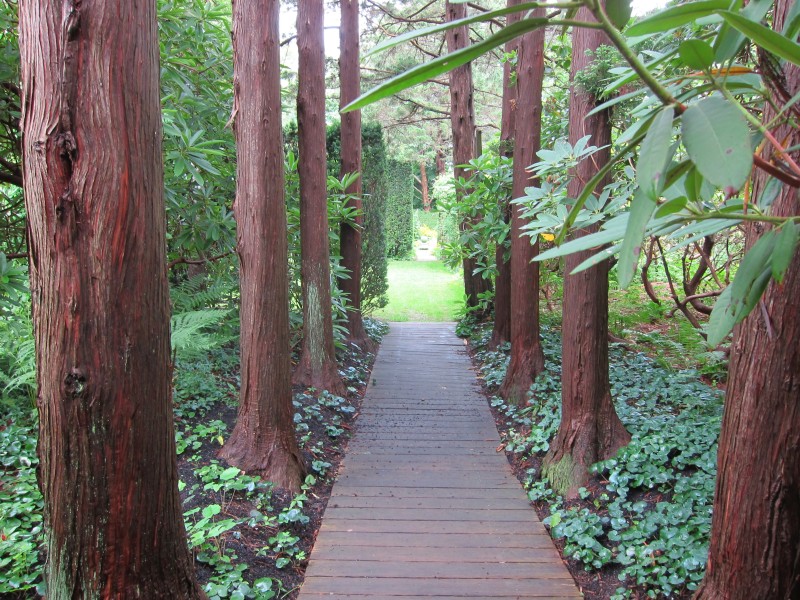
At Sakonnet Garden these high hedges and walls are for wind-proofing; additionally, tall evergreens provide winter shade that protect tender plants. In the Subtropical Quadrant, set off by a brilliantly colored Indian gazebo overlooking a small pond, bamboo is an appropriate backdrop.
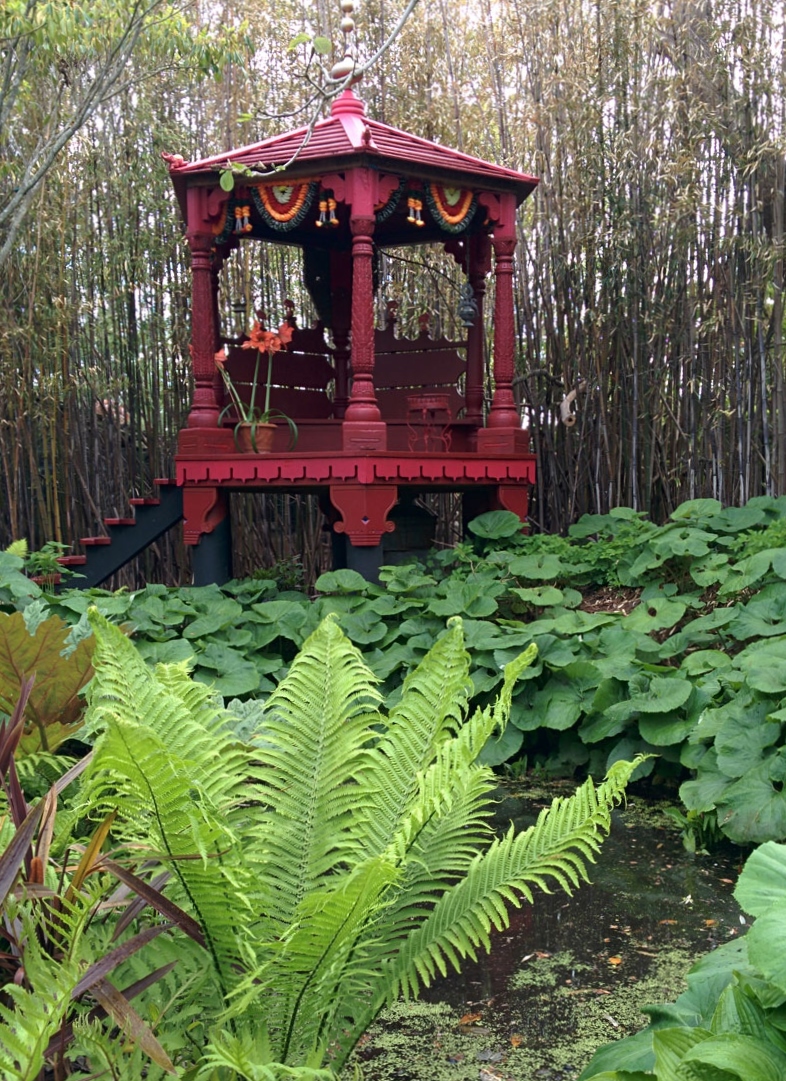
This strategy also makes possible experiments with half tender species like palms and Fatsias…and the Holy Grail of the gardening world, Meconopsis, the blue Himalayan poppy. The rare podophyllum ‘Spotty Dotty’ (Chinese May apple) was planted specifically at the base of the Indian structure’s steps to pick up on the flame-red flowers the plant will show off in early summer.
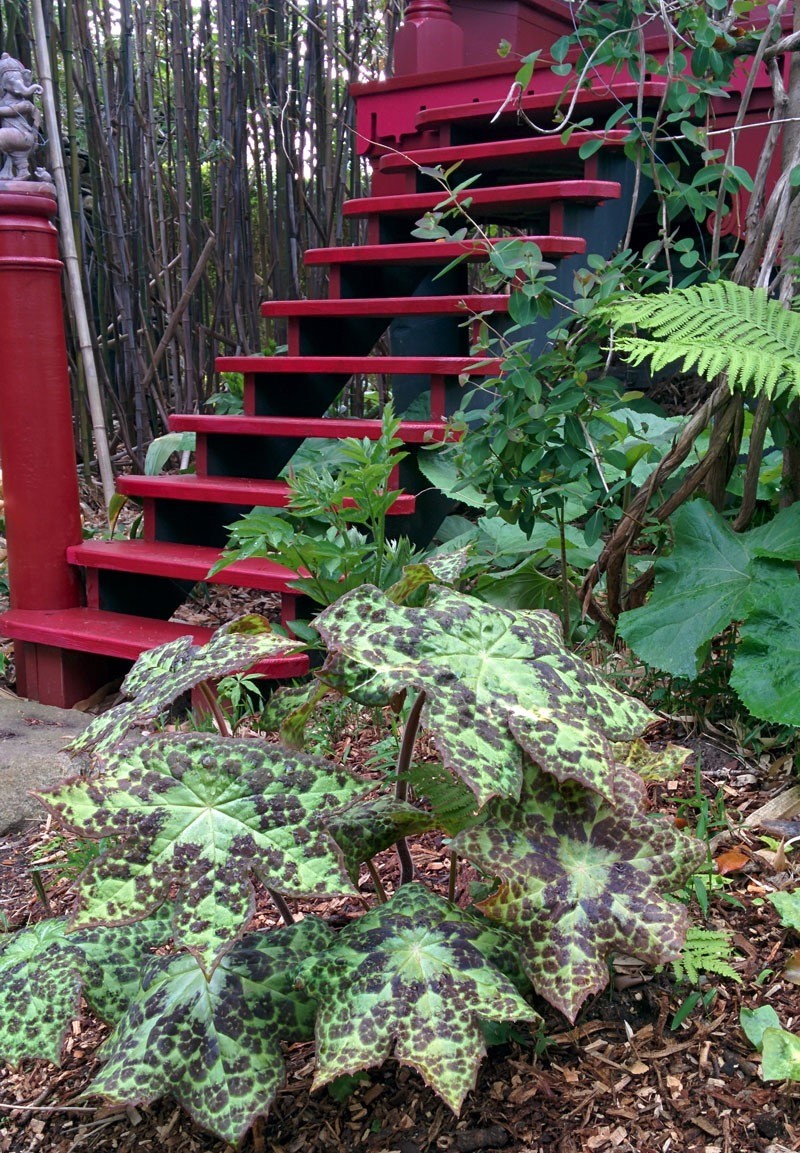
Color juxtapositions are a favorite of John’s and Mikel’s, so elegantly illustrated in the apricot garden whose star is the luscious Chinese paperbark maple, its signature peeling bark set off by the sun’s rays. Heuchera ‘Caramel,’ alstroemeria, lilies and peony tulip ‘Sensual Touch’ in apricot are well-considered complements to the Acer griseum (maple).

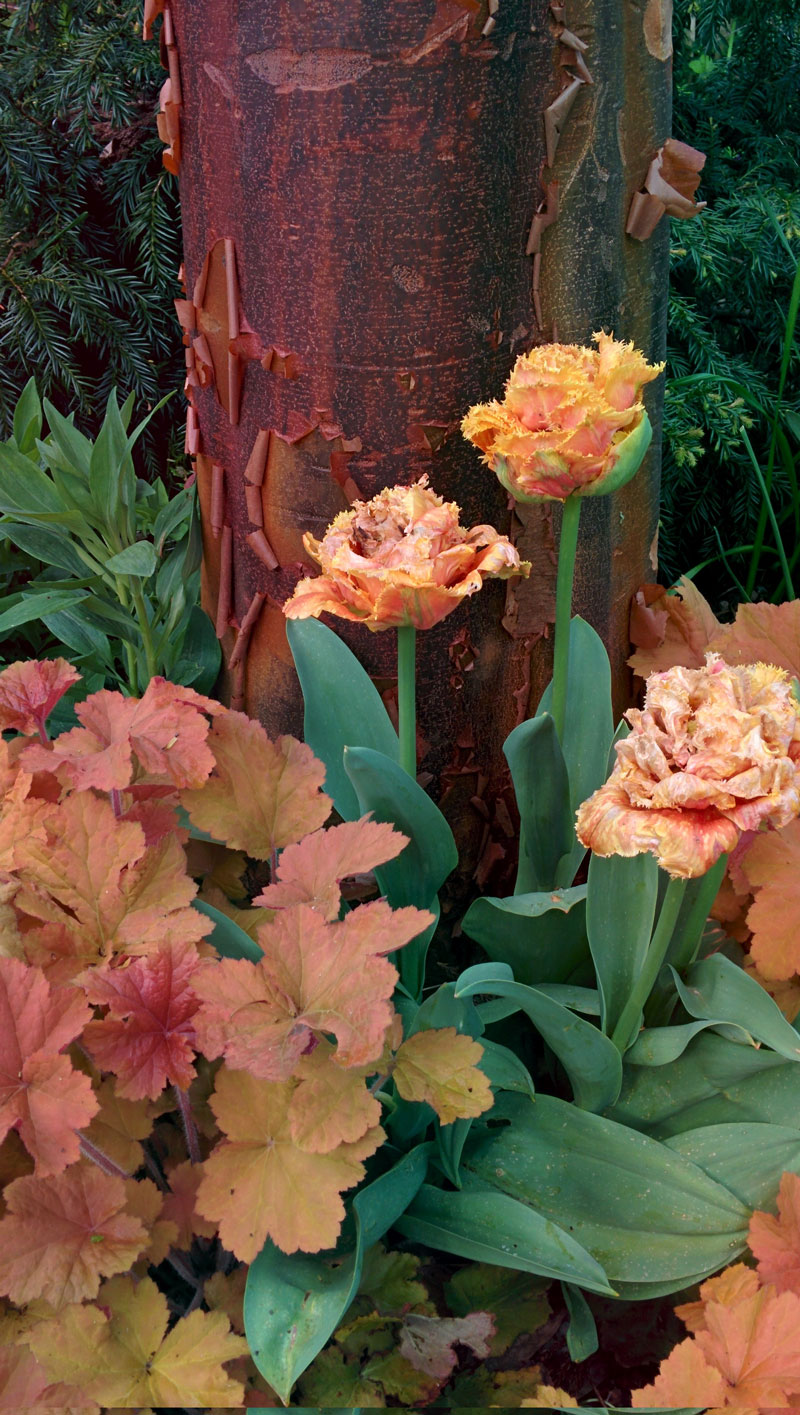
Sakonnet Garden is an admittedly “eccentric labor of love,” and one which is graciously shared. When asked what pleasures John and Mikel derive from their garden and the experience of creating it, they reply, “producing smiles…when the garden makes people happy.” As well, to give visitors the confidence that “Oh, I could do this.” Many a gardener has them to thank for being inspired to venture out of the proverbial box, myself included (Mikel Folcarelli and sister and brother Addeline and John Gwynne).

The challenge of growing rare plants — and succeeding!– has them led to other interests. Inspired by a recent trip to gardens in the Loire Valley, the two are putting the finishing touches on a formal French “pollinator garden” for butterflies, selecting plants whose nectar provides food for those winged beauties that will soon be sprouting from the caterpillars that have also been introduced. Lucky, the new Corgi puppy, is thrilled beyond words…

The Sakonnet Garden will be open for the Little Compton Garden Club garden tour on Saturday, June 18th. Don’t miss it!




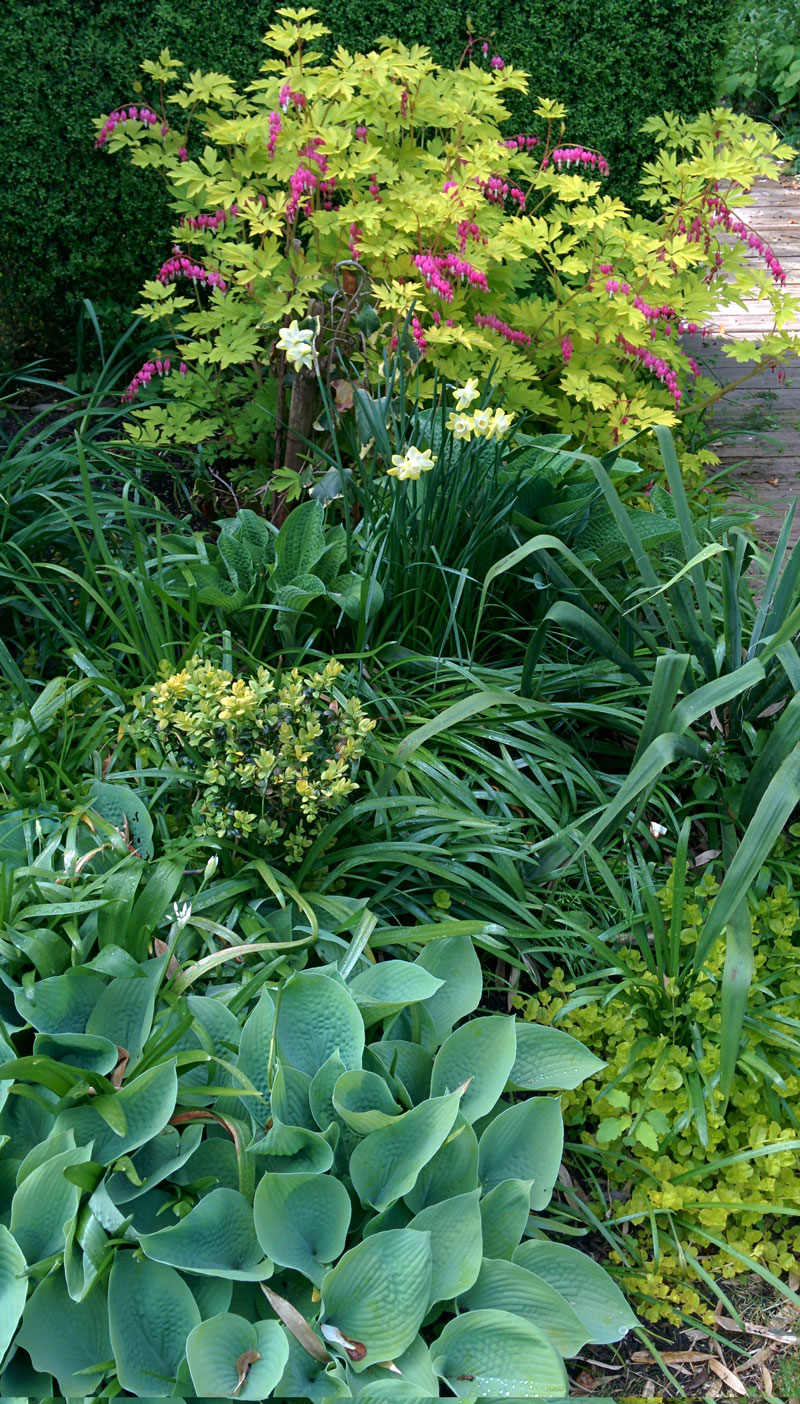







Spectacular!!!